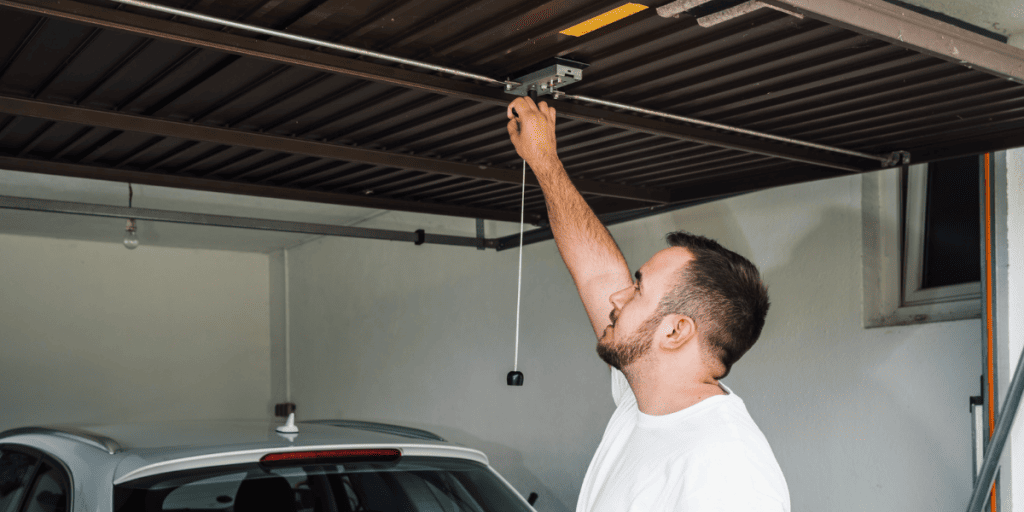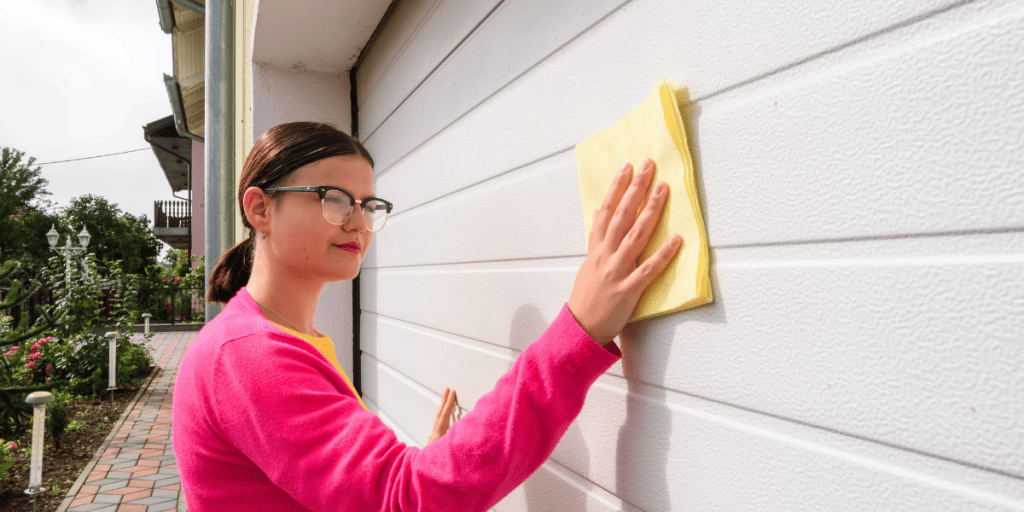The Importance of Garage Door Safety for Kids
Family Safety First: Prioritizing Garage Door Safety for Children
Welcome to this important blog post on garage door safety for kids. As parents and caregivers, it is our responsibility to ensure the well-being of our children, and one area that demands particular attention is garage door safety. While the garage is often viewed as a functional space for storing vehicles and household items, it can pose significant risks to children if safety measures are overlooked. In this article, we will explore the potential dangers associated with garage doors and highlight the crucial role of educating parents and caregivers in safeguarding their children. Our aim is to raise awareness about the potential hazards and provide practical safety tips to ensure that our kids can move around the garage area without any risks to their health and safety.
Understanding the Dangers of Garage Doors
Garage doors, despite being a common feature in many homes, can present significant dangers to children if not properly managed. Children are naturally curious and may not fully comprehend the potential risks associated with garage doors. Here are some ways garage doors can pose hazards for children:
- Entrapment: One of the most serious dangers is entrapment, where a child’s fingers, hands, or other body parts get caught between the moving parts of the garage door. This can lead to severe injuries, including crushed or broken bones.
- Remote Control Misuse: Children may be fascinated by the remote control that operates the garage door. If they get hold of it without supervision, they might inadvertently open or close the door, potentially leading to accidents.
- Playing Underneath the Door: Children might be tempted to play or crawl underneath a partially open garage door, not realizing that it can start closing at any moment. This can result in head, neck, or back injuries.
- Lack of Awareness: Young children may not be aware of the potential dangers associated with garage doors, leading them to approach or interact with the door inappropriately.
Common Scenarios that Lead to Accidents and Injuries:
Several scenarios can result in accidents and injuries involving garage doors:
- Lack of Maintenance: Garage doors that are not properly maintained may become faulty or malfunction, increasing the risk of unexpected movements or failures.
- Unsupervised Access: If children can access the garage area without adult supervision, they might engage with the garage door in unsafe ways, leading to accidents.
- Closing on Objects: Garage doors can close on objects left in their path, such as toys, bicycles, or even pets. If a child tries to retrieve a trapped item, they could get caught in the door’s mechanism.
- Playing with Door Controls: Children may play with wall-mounted controls or remote controls, leading to unintended garage door movements.
The Significance of Adult Supervision around Garage Doors:
The presence of adults actively supervising children around garage doors is of utmost importance to prevent accidents and injuries. Responsible adults can take the following steps to ensure safety:
- Education: Adults should educate children about the potential dangers of garage doors and explain the rules for safe behavior around them.
- Keep Remotes Out of Reach: Store garage door remotes in a secure location, out of the reach of children. Consider using keychain remotes that can be attached to a responsible adult’s keys.
- Regular Maintenance: Schedule regular maintenance and inspections of the garage door to ensure it functions properly and safely.
- Visual Checks: Before operating the garage door, adults should visually inspect the area to ensure there are no objects, pets, or children in the door’s path.
- Install Safety Features: Consider installing safety features such as motion sensors or photoelectric eyes that detect objects in the garage door’s path and automatically halt its movement.
- Lock the Door: When the garage door is not in use, keep it securely closed and locked to prevent unauthorized access.
Safety Measures for Preventing Accidents
Keep Remote Controls Out of Reach:
- Advise parents to keep garage door remotes in a secure, elevated location: It is crucial to stress the importance of keeping garage door remotes out of reach of children. Placing them in a high and secure location, such as on a shelf or inside a locked cabinet, prevents curious children from accessing the remote and potentially causing accidents.
- Discuss the risks of leaving remotes accessible to children: Engaging in conversations with parents about the potential dangers of leaving garage door remotes within children’s reach can help raise awareness. Accidents may occur when children play with the remotes, causing the garage door to operate unexpectedly and endangering themselves or others.
Teach Children about Garage Door Risks:
- Encourage parents to educate kids about the potential dangers of garage doors: Parents should take the time to explain to their children the risks associated with garage doors. Children need to understand that garage doors are heavy and powerful machinery that should not be treated as toys.
- Emphasize the importance of keeping fingers and objects away from moving parts: Children must be aware that garage doors have moving parts, such as rollers and hinges, which can cause serious injuries if fingers or objects get caught in them. Teaching kids to never place their fingers or any objects near the door’s moving components is crucial for their safety.
Perform Regular Maintenance:
- Explain the significance of maintaining garage doors in good working condition: Regular maintenance is essential for ensuring that garage doors operate safely and efficiently. Explain to homeowners that proper maintenance helps identify and address potential issues before they turn into safety hazards.
- Recommend regular inspections and professional maintenance checks: Encourage homeowners to schedule periodic inspections by a qualified professional. During these inspections, technicians can identify worn-out parts, loose connections, or imbalances that might compromise the garage door’s safety.
Install Safety Sensors and Auto-Reverse Mechanisms:
- Discuss the role of safety sensors in preventing accidents: Safety sensors are vital components of modern garage doors. These sensors use infrared beams to detect obstructions or movement in the door’s path, causing the door to stop and reverse its operation if something is detected. Stress the importance of having functional safety sensors to prevent accidents involving people or objects.
- Explain how auto-reverse mechanisms can save lives and prevent injuries: Auto-reverse mechanisms are designed to make garage doors reverse their direction if they encounter an obstruction while closing. This feature is crucial for preventing entrapment incidents, especially for small children or pets who might accidentally wander under a closing door.
Adjust Spring Tension and Balance:
- Advise parents to leave spring adjustment to professionals: Garage door springs are under high tension and can be extremely dangerous if mishandled. It’s essential to emphasize that adjusting or repairing springs should always be left to trained professionals who have the proper tools and expertise to do the job safely.
- Stress the importance of well-balanced garage doors for safe operation: A properly balanced garage door is essential for its smooth and safe operation. If a door is unbalanced, it may not function correctly, leading to increased wear on components and potentially causing accidents. Encourage homeowners to have their garage door’s balance checked regularly by professionals.
Create Safe Garage Zones
Designate a Play Area Away from Garage Doors:
- Suggest creating a safe play zone in the backyard or other secure areas: When designating a play area for children, it’s essential to choose a location that is far away from the garage doors. Ideally, the backyard would be an excellent option, as it provides a spacious and open environment for kids to enjoy their activities safely. Other secure areas within the property, such as a fenced-off patio or a dedicated playroom, could also work well. The objective is to keep children away from the potential hazards associated with garage doors.
- Explain the dangers of allowing children to play near the garage door: Playing near garage doors can pose significant risks to children. Garage doors are heavy and operate with powerful mechanisms that can cause severe injuries if not used properly. Children might be tempted to play with the garage door’s controls, attempt to climb the door, or get caught underneath it while it’s in motion. By designating a separate play area away from the garage doors, parents can minimize the chances of such accidents occurring and ensure a safer environment for their children to play.
Store Hazardous Materials Securely:
- Remind parents to keep chemicals and dangerous items out of children’s reach: It’s crucial for parents to be vigilant about storing hazardous materials, such as cleaning agents, pesticides, sharp tools, or flammable substances, securely out of reach of children. These items should be stored in high cabinets or lockable containers to prevent accidental access by curious kids. Educate parents about the potential risks of ingestion, poisoning, or other accidents that may occur if children come into contact with these hazardous materials.
- Discuss the risks of storing hazardous materials in the garage: Garages often serve as storage spaces for various household items, including hazardous materials. However, the garage is not an ideal location for storing these substances, especially if children have access to it. Garages can become extremely hot or cold depending on the weather, potentially causing chemicals to degrade or react unexpectedly. Additionally, leaks or spills can occur, creating an unsafe environment for both children and adults. Encourage parents to consider alternative storage areas, such as a locked cabinet inside the house, or a dedicated storage shed away from children’s play areas.
Childproof Garage Access:
- Discuss the importance of securing the door leading from the house to the garage: The door connecting the house to the garage is a critical point of concern for child safety. This door should always remain secured to prevent unsupervised access to the garage. Children may be naturally curious and venture into the garage, where potential hazards exist. Parents should be encouraged to keep the door locked or consider installing a childproof mechanism to prevent young children from opening it without supervision.
- Recommend childproof locks or alarms for added safety: Installing childproof locks on the door leading to the garage is an effective way to prevent children from entering the garage without adult supervision. These locks are typically easy for adults to operate but difficult for young children to figure out. Alternatively, parents can consider using alarms that alert them when the door is opened. This serves as an additional layer of safety, providing parents with immediate awareness if their child tries to access the garage without permission.
Emergency Preparedness and First Aid
Emergency Preparedness and First Aid are essential life skills that can make a significant difference in the outcome of accidents and emergencies. Teaching children how to respond to emergencies and educating parents and caregivers on first aid procedures can greatly enhance the safety and well-being of individuals in a variety of situations. Here’s a more detailed discussion of each aspect:
Teach Children How to Respond to Emergencies:
- Provide age-appropriate instructions on what to do in case of an accident: It is crucial to tailor the instructions to the child’s age and level of understanding. Younger children should be taught basic safety rules, such as not touching sharp objects, hot surfaces, or hazardous substances. As children grow older, they can be introduced to more complex concepts, such as recognizing emergency situations like fires, medical emergencies, or natural disasters, and understanding when and how to seek help.
For example, preschool-age children can be taught how to dial emergency numbers (like 911) and provide basic information about their location. Older children can be educated on specific responses, like how to administer basic first aid, perform CPR, or safely exit a building during a fire.
- Stress the importance of calling for help and staying calm: Children need to understand the importance of immediately seeking help from a trusted adult or calling emergency services in case of an accident or emergency. Emphasize the significance of staying calm during such situations, as panicking can hinder their ability to think clearly and act appropriately. Role-playing scenarios and teaching children through fun activities can help them retain this knowledge better and respond confidently when faced with real emergencies.
Educate Parents and Caregivers on First Aid Procedures:
- Offer basic first aid tips for common garage door-related injuries: Garage doors can pose potential hazards, especially for children playing around them. Parents and caregivers should be made aware of the risks and provided with essential first aid tips in case of accidents. Some common garage door-related injuries include pinched fingers, entrapment, or falls.
Tips for handling such injuries may include:
- How to safely remove a trapped finger without causing further harm.
- The appropriate steps to take if a child gets stuck under the garage door.
- How to assess the severity of injuries and when to seek medical attention.
- Encourage parents to take first aid training courses for additional knowledge: While providing basic first aid tips is helpful, encouraging parents and caregivers to enroll in first aid training courses can significantly enhance their ability to respond effectively to various emergencies. These courses often cover a wide range of topics, including CPR, wound care, choking, burns, fractures, and other life-saving techniques.
First aid training empowers parents and caregivers to act confidently and decisively in critical situations, potentially saving lives or minimizing the severity of injuries. Many community organizations, schools, and healthcare facilities offer first aid training programs, making it easily accessible for interested individuals.
Frequently Asked Questions
Why is garage door safety important for kids?
Garage door safety is crucial for kids to prevent accidents and injuries. Garage doors are heavy and can cause severe harm if not handled properly. Children may not fully comprehend the potential dangers associated with garage doors, making it essential for parents and guardians to ensure their
What are the potential dangers posed by garage doors to children?
Garage doors can pose various dangers to children, including:
- Entrapment: Kids may get caught under a closing garage door, leading to serious injuries or suffocation.
- Falling Objects: Garage doors with faulty springs or cables could suddenly collapse, causing objects to fall and harm children nearby.
- Automatic Door Operation: Automated garage doors may close unexpectedly, catching children in their path.
- Playing Under the Door: Children might think it’s fun to play under a partially open garage door, not realizing the risks involved.
What steps can parents take to enhance garage door safety for kids?
Parents can take several measures to improve garage door safety for kids:
- Educate Kids: Teach children about the dangers of garage doors and explain why they should never play near them.
- Supervise: Always supervise young children when near the garage or operating the door.
- Test the Sensors: Ensure the garage door’s safety sensors are working correctly by performing regular tests.
- Regular Maintenance: Schedule periodic garage door inspections and maintenance to address any issues promptly.
- Keep Remote Controls Secure: Keep remote controls out of reach of children to prevent accidental door operation.
- Lock the Garage: If possible, lock the garage when not in use to prevent children from entering without supervision.
Can garage door openers be dangerous for kids?
Yes, garage door openers can be dangerous for kids if misused or if the safety features are not functioning correctly. Children should never be allowed to operate the garage door opener without adult supervision.
How often should garage door safety checks be conducted?
It is recommended to perform garage door safety checks at least once a month. These checks should include testing the door’s reversal system and ensuring that safety sensors are functioning correctly.
Conclusion
In conclusion, garage door safety for kids is of paramount importance to ensure their well-being and prevent potentially life-threatening accidents and injuries. This article has highlighted the significance of being vigilant and proactive in safeguarding children from garage-related hazards. By understanding the risks associated with garage doors and implementing essential safety measures, we can significantly reduce the chances of accidents and create a safer environment for our children to thrive in.



